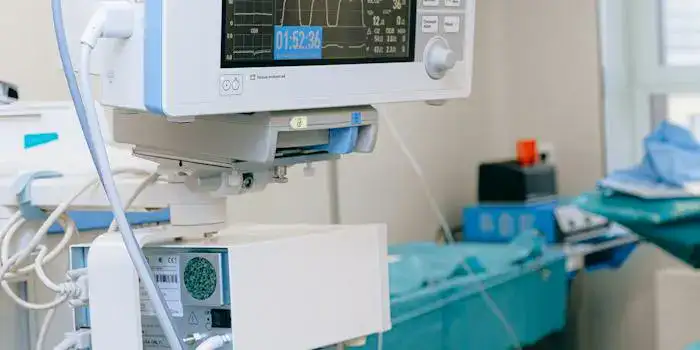As a tech-savvy person, I have seen how technology has transformed different industries, including healthcare. From different medicines to advanced electronic devices, technology has made the healthcare industry more accessible, convenient, and safe for patients who need treatment.
Technology in healthcare refers to the use of various technological tools, devices, and systems to improve the delivery of healthcare services and enhance patient outcomes. This field encompasses a wide range of innovations, including medical imaging, telemedicine, and other medical technologies. This increases its effectiveness, efficiency, and accessibility for both patients and healthcare professionals.
In this article, you’ll learn:
- The impact of technology on healthcare
- Examples of technology in healthcare
- Challenges of technology in healthcare
- The future of technology in healthcare
The impact of technology on healthcare
Here are some fantastic benefits of technology that are improving the healthcare industry.
1. Improved diagnosis and treatment
The way healthcare workers diagnose and treat patients today has been revolutionized due to the advancement of technologies.
With the use of modern technologies such as MRI and CT scans, healthcare providers can get a clearer and more detailed picture of a patient’s health.
As a result, diagnoses have become faster and more precise, enabling earlier treatment and better patient outcomes. I remember going to the doctor with my friend because he has persistent back pain.
The traditional X-rays did not show much, but after the doctor recommend MRI, my friend was able to identify that he had a herniated disc.
From what I saw, the earlier diagnosis allowed for prompt treatment and quicker recovery for my friend.
2. Increased patient safety
For many years, medical errors have been a recurring problem in the healthcare industry.
These mistakes may be anything from little inconsistencies in a patient’s medical record to life-threatening mistakes during medical procedures. Medical errors were also often unreported, and their impact was not fully understood.
As the healthcare industry advances, experts have realized that one of the major causes of these medical errors is manual processes and lack of technology.
Today, there has been a greater focus on reducing medical errors, and technology has played a key role in this effort.
For example, the widespread use of electronic health records has increased the reliability and usability of patient data, lowering the possibility of medical mistakes.
Clinical decision-making software is one example of a decision-support technology that has assisted healthcare professionals in developing more precise and informed diagnoses and treatment regimens.
3. Greater convenience for patients
From what I’ve noticed, this is one of the most significant impacts of technology on healthcare, especially during the peak of the Covid-19 pandemic.
With the rise of digital health technologies, patients now have greater control over their health and wellness and can access healthcare services from the comfort of their own homes.
The rise of digital health technologies has been particularly useful during the COVID-19 pandemic, as it has allowed patients to receive medical care while minimizing their exposure to the virus.
Another technology that has increased the convenience of patients is widespread mobile health applications that can track symptoms, manage chronic conditions, and access educational resources.
It also provides patients with access to their medical records and test result, so they can stay informed and updated.
4. Enhanced clinical research
During the past several years, technology had a huge impact on clinical research. This enables researchers and medical professionals to better understand illnesses and provide effective treatments.
Researchers are now able to carry out clinical trials more quickly and affordably today than they could with traditional trials.
One good example of this is the development of the Covid19 vaccine. If you have noticed, the Covid vaccine was created in less than a year, and human clinical trials got started right away.
Many people had taken part in that clinical trials for the covid19 vaccination which allowed them to enhance healthcare and gain access to cutting-edge therapies that would not have been otherwise available.
Another example is genomic technology, this technology has been instrumental in advancing clinical research.
Researchers have learned new things about the genetic causes of illnesses due to the development of high-throughput sequencing, which has made it possible to analyze the human genome in greater depth.
5. Better management of chronic conditions
The way that chronic illnesses are managed in healthcare has been significantly impacted by technology.
As we all know, a significant number of the population is affected by chronic diseases including diabetes, heart disease, and arthritis, which require ongoing monitoring and management.
Today, experts have developed an application which is called telemedicine that allows patients to consult with their doctors from the comfort of their own homes.
This has been particularly beneficial for those who have a chronic condition since they can receive care without traveling to their doctor’s office.
Additionally, telemedicine has allowed healthcare providers to monitor patients more closely, detecting and addressing issues before they become more serious.
6. Improved quality of life
One of the ways how technology improved the quality of life in healthcare is by reducing the number of fatalities during medical operations.
For the past decades, the number of fatalities in hospitals has reduced because technology has aided medical experts in the development of new treatments, therapies, and procedures.
Advances in biotechnology and digital health have also allowed researchers to develop new drugs and devices that better target the underlying causes of conditions, improving patient outcomes and reducing the risk of death.
Another way in which technology has reduced fatalities in healthcare is through the use of data and analytics to improve patient safety.
By analyzing this data, healthcare providers can identify patterns and trends that may contribute to adverse events, allowing them to take proactive steps to reduce the risk of fatalities.
7. Better public health awareness
Technology in healthcare has considerably benefited public health by providing communities with timely and accurate illness information, therefore raising awareness and promoting preventative actions.
For example, because of the extensive use of the internet and social media, health information is easily available and disseminated to the general population.
These platforms may be used by public health authorities and healthcare practitioners to educate populations about the dangers and symptoms of various diseases, as well as provide information on ways to prevent sickness spread.
I also want to give credit to news and television on how they informed the world about the covid virus that is starting to spread in every country.
Also, news from television aided in the public health campaign to remind people to get vaccinated.
Examples of technology in healthcare
There are a lot of technologies in healthcare since this industry has already been present for thousands of years.
The good thing about the healthcare industry is that they keep on improving previous technologies or they developed new one that is more efficient and effective in supporting medical professionals.
Here, I provided some of the most common and useful technologies in healthcare:
- Stethoscope: A very common and useful technology for doctors used in listening to sounds produced within the body, specifically in the heart and lungs.
- Syringe: This medical device is used to inject liquids into the body or to withdraw fluids from the body. Syringes are also used to inject medications such as insulin, pain medications, and antibiotics directly into the bloodstream. This device plays critical in healthcare and has been used for many years.
- Microscope: A microscope is a scientific instrument used to magnify and examine small objects, such as cells and tissues. In healthcare, microscopes are used to examine biological specimens, such as blood and tissue samples, to diagnose diseases and conditions.
- Thermometers: A thermometer is a medical device used to measure body temperature. In healthcare, thermometers are used to diagnose and monitor fevers, which can be an indicator of a variety of illnesses and infections. There are several types of thermometers because some are suited for specific age groups and situations.
- Biosensors: Biosensors are devices that use biological material, such as enzymes or antibodies, to detect specific analytes in a sample, such as glucose or lactate, in real time. In healthcare, biosensors are used to monitor various biological markers, such as blood glucose levels in diabetics, or to detect and diagnose diseases. There are several types of biosensors and lately, wearable biosensors are increasingly becoming popular.
- 3D Printing: 3D printing, also known as additive manufacturing, is a process of creating three-dimensional objects by building up successive layers of material, such as plastic, metal, or bio-ink. In healthcare, 3D printing is used in a variety of applications, including creating custom prosthetics, implants, and surgical tools, as well as producing replicas of organs and tissues for training and research purposes.
- Robotic Arm: A robotic arm is a type of medical device that uses advanced robotics technology to assist in surgical procedures or to perform tasks that would otherwise require human manual dexterity and precision. In healthcare, robotic arms are used in a variety of applications, including minimally invasive surgery, rehabilitation, and precise material handling.
- Artificial Intelligence: Artificial Intelligence (AI) refers to the development of computer systems that can perform tasks that would normally require human intelligence, such as understanding natural language, recognizing patterns, and making decisions. In healthcare, AI is being used in a variety of applications to improve patient outcomes, streamline processes, and increase efficiency.
Overall, technology plays a vital role in healthcare, and its impact on the industry has been profound.
The introduction and advancement of various technologies that I’ve mentioned above have revolutionized the way medical professionals diagnose, treat, and monitor patients.
These technologies have enabled more efficient and effective care, resulting in improved patient outcomes and a higher quality of life for many individuals.
The healthcare industry is constantly evolving and adapting to new advancements, and technology will continue to play a critical role in shaping the future of medicine.
Challenges of technology in healthcare
If there are benefits, there are also challenges. In the healthcare industry, the use of technology, while bringing tremendous advancements, has not been without its own set of hurdles.
1. Workforce training for healthcare professionals
The rapid change and advancement of technology are one of the biggest challenges in healthcare because the administration or the company needs to ensure that healthcare professionals are well-trained and equipped to effectively use these new technologies.
It also means that healthcare professionals need to constantly update their skills and knowledge to keep up.
This can be difficult for small healthcare organizations because they have limited resources for training and development.
An example of this is that many big hospitals today are using electronic health records to manage patient information.
However, if healthcare professionals are not trained on how to use this device effectively, they may experience frustration, errors, and even miss important information that could impact a patient’s health.
2. Cost and accessibility
Another challenge of technology in healthcare is that advanced technologies can be very expensive, making them out of reach for some small hospitals especially those in low-income countries.
In the healthcare industry, technology plays a crucial role in diagnosing and treating patients.
For the information of everyone, different hospitals have varying levels of technology and equipment, and it’s common for doctors to work with the technology that is available to them at their facility.
However, if a doctor needs a specific machine or technology to diagnose or treat a patient, and that technology is not available at their hospital, the doctor would suggest to that patient that they will seek treatment at a different facility that has the necessary equipment.
3. Data privacy and confidentiality
Indeed, living in the tech era has brought about many benefits, but it has also created new challenges particularly when it comes to data privacy and confidentiality, and the healthcare industry is no excuse.
With the widespread use of technology, there is an increased risk of patients’ health information being leaked, hacked, or otherwise misused.
Patients trust healthcare providers with sensitive and personal information, and this information must be kept secure.
There is a lot of data breach that has happened in the past where social security numbers, birth dates, and home address was compromised.
This was a major wake-up call for different industries across the world to take data privacy and security more seriously.
4. Resistance to change
Another challenge of using technology not just in healthcare, but also in some industries is getting people to embrace change.
A lot of healthcare professionals are resistant to using new technologies because they have been using a particular system or process for many years and they feel that it’s the most effective way of treating patients.
This resistance can create obstacles for hospital organizations that are trying to implement new technologies and improve patient care.
For example, some healthcare workers are not a fan of using electronic health records because they were used to working with paper records and are worried about the learning curve involved in using a new system.
For this kind of problem, hospitals need to communicate the benefits of these new technologies and provide support and training for their healthcare workers.
5. Software bugs and late warnings
In recent years, wearable devices such as fitness trackers, smartwatches, and medical devices become increasingly popular.
However, like any technology, these devices can cause software bugs and other issues that can impact accuracy and reliability.
Another huge problem brought by these medical devices is that they can cause incorrect readings and measurements of the patient’s body or performance.
This can be dangerous for the patient’s health, particularly for those who have serious medical conditions.
Late warnings are also a problem in wearable devices because if the device is designed to alert the patient that there’s a sudden change in their heart rate or blood pressure, and the device had a late warning, it could result in the patient not receiving a quick treatment and could potentially put their health at risk.
The future of technology in healthcare
As someone who loves technology and is also passionate about health, this is a topic that I find to be interesting because we never know what technologies will emerge in the future or what diseases will come and how technology in healthcare will counter it.
The growth of artificial intelligence is one of the main trends I’m noticing right now.
According to what I’ve studied and observed, AI is being utilized to create novel therapies and medications as well as to increase the accuracy of medical diagnosis.
Machine learning algorithms are a subset of artificial intelligence that are employed in the analysis of massive volumes of medical data in order to spot trends and forecast patient outcomes.
Patients’ personalized treatment programs can then be created using this information.
The usage of virtual reality is a further emerging technology that will benefit the healthcare industry.
It is now utilized in some healthcare settings, but over the next ten years, it will become a more common tool for medical practitioners.
Additionally, it could aid patients in conquering phobias, anxiety, and other mental health issues.
Finally, we have robotic surgery that is already becoming more common, but in the next decades, we may expect to see more advanced robotic arms that are capable of performing complex procedures with better precision and accuracy.
Final Thoughts
That’s it! It’s amazing to know that tech in healthcare is really improving to help patients lead healthier, happier lives.
I know that the future of healthcare is very bright because experts continue to push the boundaries of technology, finding new ways to improve our well-being.
As we look ahead, it’s clear that the fusion of healthcare and technology will open doors to even more remarkable discoveries and life-changing innovations, making a healthier world within our grasp.










